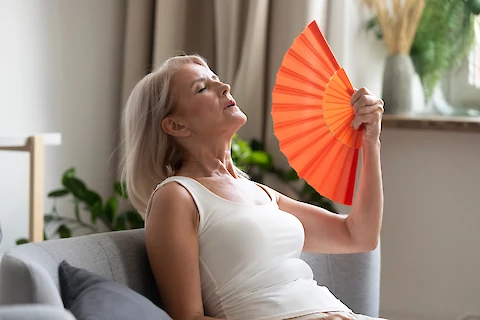
Caregiver's Guide to the Difference Between Heat Stroke and Heat Stress for Seniors
As summer temperatures start to soar in Tennessee, it's important to protect older adults from the dangers of heat stroke and heat stress. As we get older, our ability to handle high temperatures decreases. Health conditions such as kidney disease, diabetes, and high blood pressure can make older adults more susceptible to heat-related illnesses. Certain medications can also interfere with the body's ability to regulate temperature. As a caregiver in the Knoxville area, it's essential to carefully monitor the older adults in your life for signs of heat stress and heat stroke and know how to respond appropriately.
Understanding the Signs of Heat Stress in Older Adults
Heat stress, also sometimes called heat exhaustion, may result in symptoms such as:
- Excessive sweating
- Becoming very pale
- Feeling tired, dizzy, or weak
- Cramping in the muscles
- Headaches
- Feeling sick to the stomach
- Fainting
- Weakened pulse
- Shallow breathing
- Skin that's cold, clammy, and pale
If you notice signs of heat stress, move the older adult to a cooler location and loosen clothing to allow airflow. It may help to put cool, wet cloths on the skin, take a cool bath, or spray the skin with a water bottle to help reduce their body temperature. Get them to take slow sips of water to rehydrate their body. If the symptoms continue to get worse, you should seek medical help.
What’s the Difference Between Heat Stress and Heat Stroke?
Heat stroke is a more severe and potentially life-threatening heat-related illness. Patients experiencing a heat stroke may show many of the same signs as heat exhaustion, with a few very significant differences:
- Sweat is the body attempting to cool itself. If an older adult is experiencing heat stress, they will likely sweat excessively. However, older adults will stop sweating during heat stroke despite the hot temperatures. If you notice they've stopped sweating while the temperature remains high, they may be experiencing heat stroke.
- The skin of an older adult experiencing heat stress will be pale, cool, and clammy. In heat stroke, the skin will become hot and dry to the touch and may become very red. If you notice these changes in their skin, they may be starting to experience heat stroke.
- Older adults experiencing heat stroke may have a temperature of 103°F or higher and may experience increased mental confusion.
If you notice any of the signs of heat stroke, you should call 911 right away. While waiting for medical attention, you can move the person to a cooler location and put cool, damp cloths on their skin to help bring their temperature down.
How Caregivers Can Help Protect Older Adults From Heat-Related Illnesses
Caregivers in Knoxville, Maryville, Clinton, and the surrounding areas should check in on older adults twice a day when the temperatures rise. Please encourage them to stay out of the sun, take cool showers, and avoid activity. They should also be encouraged to drink more water and wear light, loose clothing. If they don't have air conditioning at home, they may want to spend the day somewhere that does. A local community center, public library, or a friend's home may be a good alternative until the temperatures cool.
If you cannot check on an older adult twice a day, consider hiring in-home senior care. They can help you monitor for signs of heat-related illnesses and ensure your loved ones stay safe during these hot Tennessee summer days.